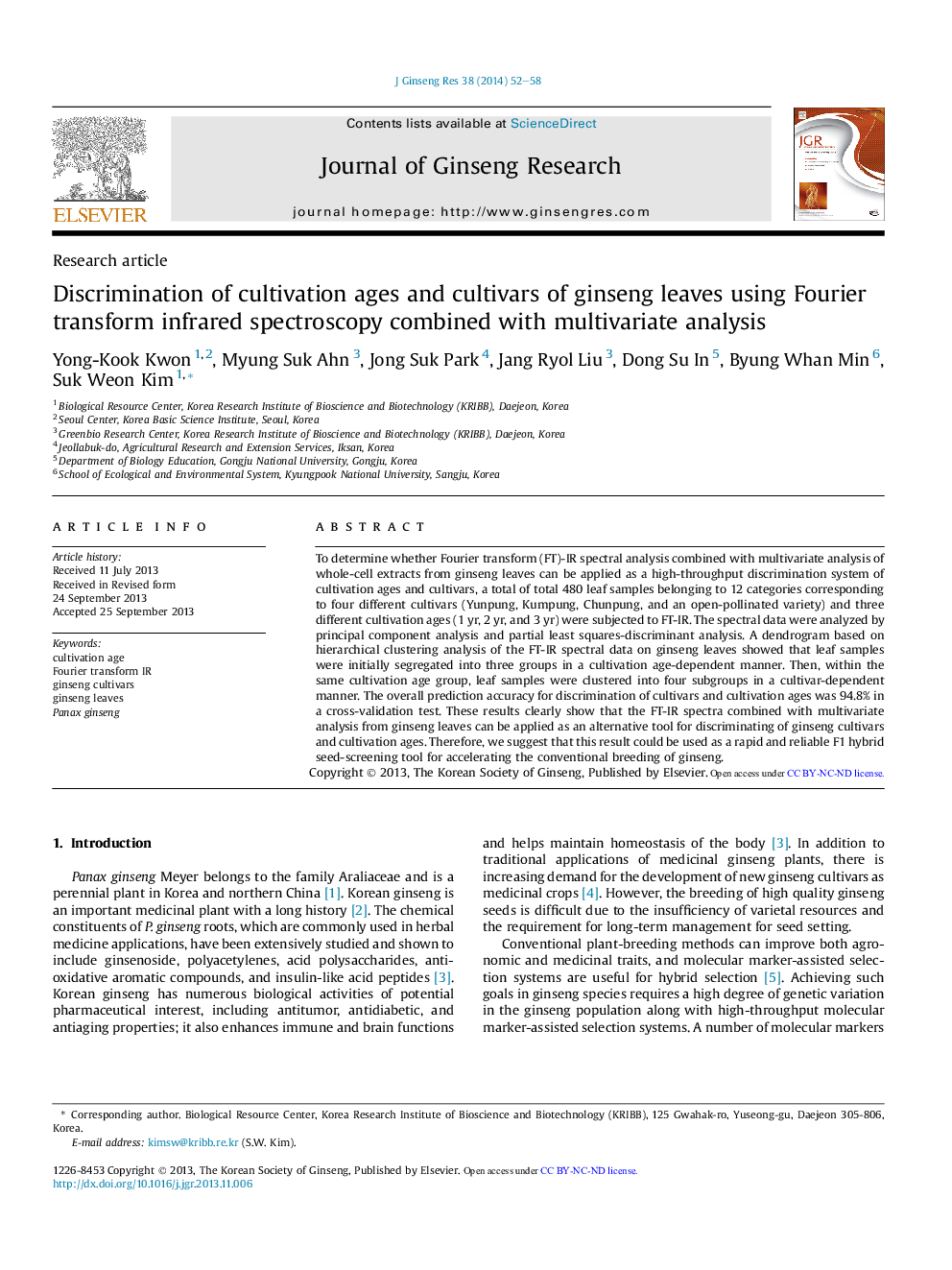| کد مقاله | کد نشریه | سال انتشار | مقاله انگلیسی | نسخه تمام متن |
|---|---|---|---|---|
| 3099397 | 1191103 | 2014 | 7 صفحه PDF | دانلود رایگان |
To determine whether Fourier transform (FT)-IR spectral analysis combined with multivariate analysis of whole-cell extracts from ginseng leaves can be applied as a high-throughput discrimination system of cultivation ages and cultivars, a total of total 480 leaf samples belonging to 12 categories corresponding to four different cultivars (Yunpung, Kumpung, Chunpung, and an open-pollinated variety) and three different cultivation ages (1 yr, 2 yr, and 3 yr) were subjected to FT-IR. The spectral data were analyzed by principal component analysis and partial least squares-discriminant analysis. A dendrogram based on hierarchical clustering analysis of the FT-IR spectral data on ginseng leaves showed that leaf samples were initially segregated into three groups in a cultivation age-dependent manner. Then, within the same cultivation age group, leaf samples were clustered into four subgroups in a cultivar-dependent manner. The overall prediction accuracy for discrimination of cultivars and cultivation ages was 94.8% in a cross-validation test. These results clearly show that the FT-IR spectra combined with multivariate analysis from ginseng leaves can be applied as an alternative tool for discriminating of ginseng cultivars and cultivation ages. Therefore, we suggest that this result could be used as a rapid and reliable F1 hybrid seed-screening tool for accelerating the conventional breeding of ginseng.
Journal: Journal of Ginseng Research - Volume 38, Issue 1, January 2014, Pages 52–58
